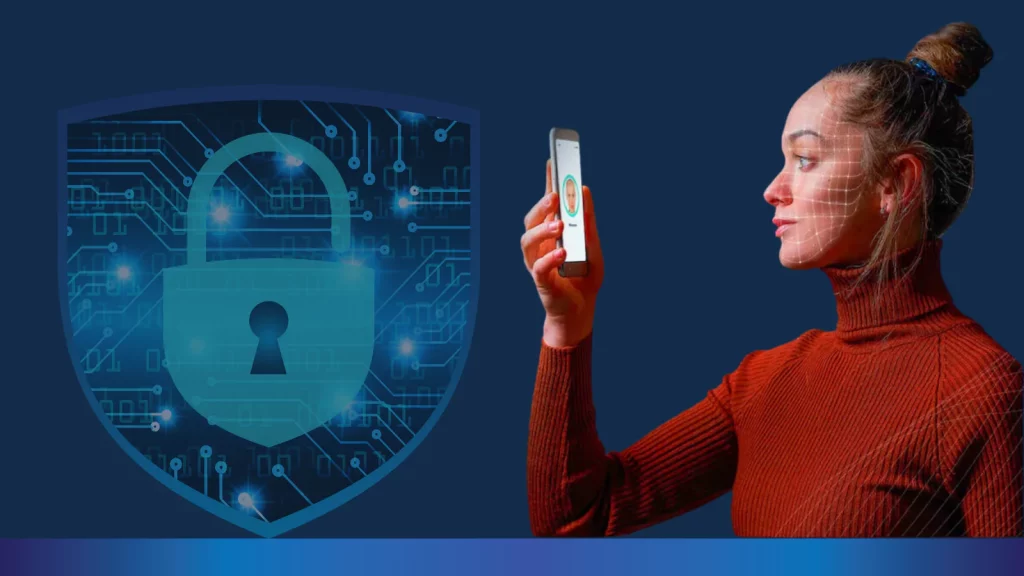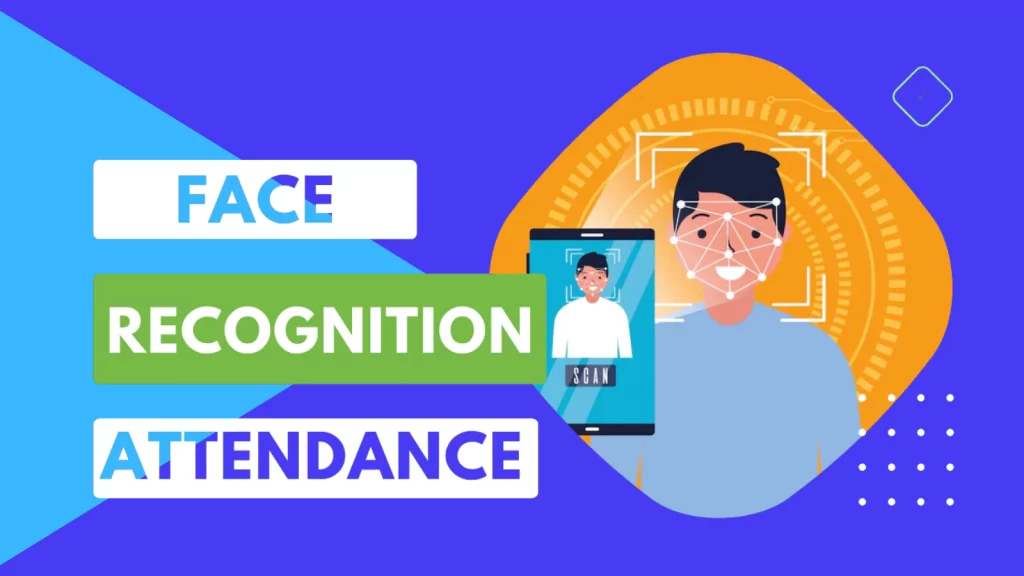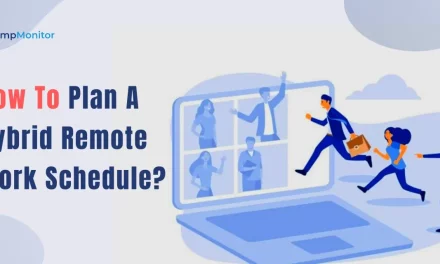In today’s fast-evolving business world, organizations are constantly looking for ways to boost productivity, enhance security through face identification, and streamline operations. One technology that has rapidly gained traction is biometric systems, particularly face identification technology.
As businesses adopt this cutting-edge solution for workforce management, it’s clear that facial recognition in attendance systems is revolutionizing how we track time, improve security, and optimize operations.
If you’ve ever wondered how employee face identification works in an attendance system and how it could benefit your business, you’re in the right place. In this detailed overview, we’ll guide you through the ins and outs of biometric facial recognition technology and its practical applications in the workplace. From the technology’s mechanics to its advantages, we’ve got you covered.
Let’s dive in!
Hit ‘Play’ Button & Tune Into The Blog!
What Is Biometric Technology?
To understand the role of facial recognition in attendance systems, it’s essential to first grasp the basics of biometric technology. Simply put, biometric systems are technologies used to identify individuals based on unique biological characteristics—traits that are specific to each person, such as fingerprints, voice patterns, iris scans, or in our case, facial features.
While fingerprint scanning and iris recognition have been popular for some time, facial recognition stands out as one of the most user-friendly and non-intrusive methods of identifying individuals. It’s fast, accurate, and doesn’t require physical contact—making it a particularly useful tool for attendance management systems.
How Does Facial Recognition Technology Work?
Now that we understand what biometric technology is, let’s break down how face identification works, especially in the context of an attendance system.
Detection of the Face
The process begins with the face detection phase. A high-resolution camera is used to scan the surroundings for faces in this process. This can happen in real-time as employees walk into a building or sit at their desks. Advanced face recognition software can detect faces from a wide range of angles and under different lighting conditions.
Analyzing Facial Features
Once the system detects a face, it analyzes the unique features of the person’s face. These features include the distance between the eyes, the shape of the nose, the contour of the cheekbones, and the structure of the jawline. Facial recognition algorithms create a unique faceprint or facial signature that serves as a digital representation of an individual’s face.
Matching the Faceprint to a Database
The final step in the process involves comparing the captured faceprint to a database of previously registered employees. If a match is found, the system identifies the individual and logs their attendance. In the event of a mismatch, the system may trigger an alert or deny access to secure areas.
This process happens almost instantly, making face identification a highly efficient method of employee monitoring and attendance tracking.
Why Use Facial Recognition For Attendance Systems?
Now that you have a basic understanding of how face identification works, you might be asking yourself: Why should my business invest in a biometric attendance system? What makes facial recognition stand out as a viable solution for workforce management?
Here are some of the key reasons why face identification systems are becoming increasingly popular in businesses worldwide.
-
Enhanced Accuracy and Reduced Fraud
A key benefit of facial recognition systems is their ability to minimize time theft and prevent buddy punching. In traditional time tracking systems, employees sometimes “punch in” for their colleagues, leading to payroll errors and lost revenue. With face identification, only the registered individual can clock in or out, significantly reducing fraud and ensuring that the right person is at work at the right time.
Moreover, unlike passwords or access cards, which can be forgotten, lost, or stolen, facial recognition is nearly impossible to replicate, making it one of the most accurate methods of verifying identity.
-
Non-intrusive and Contactless
One of the primary reasons face identification is so appealing is that it is completely contactless. In a time when hygiene and physical distancing are more important than ever, traditional methods like fingerprint scanning or using an access card are less desirable due to their physical nature.
With facial recognition attendance systems, employees don’t need to touch anything or even carry an ID card. They simply look at the camera, and the system does the rest. This contactless process makes it not only convenient but also safer, particularly in environments that need to prioritize hygiene.
-
Faster and More Efficient Time Tracking
Speed is another key benefit of face identification systems. In a busy workplace, especially with large teams, employee attendance needs to be recorded as quickly and seamlessly as possible. Facial recognition provides this by instantly verifying the employee’s identity with just a glance.
Employees can clock in and out much faster than they could with manual systems like PIN codes or swipe cards, allowing businesses to save valuable time. This speed also means less waiting time in queues for clocking in and out, which can increase overall employee satisfaction.
-
Improved Security and Access Control
In addition to time tracking, facial recognition systems can double as access control tools. By integrating face identification with your company’s security system, you can ensure that only authorized personnel can enter secure areas. This helps protect confidential data, sensitive equipment, and restricted zones within your workplace.
Because face recognition is harder to bypass compared to traditional keys or access cards, it adds an extra layer of protection to your workplace.
-
Seamless Integration with Other Systems
Another fantastic advantage of biometric systems is their ability to integrate with other software tools, including employee management systems, payroll platforms, and even security cameras. This means that your attendance system can seamlessly sync with other aspects of your business operations, reducing manual data entry and potential errors.
For example, once an employee’s biometric attendance system is logged, the data can automatically sync with payroll systems, ensuring that employees are paid accurately for the time they worked.
Applications Of Face Identification In The Workplace
Facial recognition is transforming the workplace by improving both security and efficiency. One key application is in attendance systems, where face identification allows for automatic clock-ins and clock-outs, eliminating the need for physical timecards and reducing errors or fraud.
Another application is in enhancing security. By using facial recognition to control access to restricted areas, businesses can ensure that only authorized personnel are allowed entry, protecting sensitive information and equipment.
Additionally, integrating face identification into employee monitoring systems, like EmpMonitor, can help track employee engagement and productivity, providing valuable insights for improving workforce management and operational efficiency. This technology is also paving the way for safer, contactless interactions in the workplace.
EmpMonitor: Enhancing Security and Efficiency In The Workplace
EmpMonitor provides one of the best facial recognition software. It provides employers with a comprehensive way to keep track of their employees’ activities. With its advanced features, managers can monitor employees’ real-time progress on tasks and projects. Here’s how EmpMonitor leverages face identification to improve business operations:
- Automated Time Tracking: EmpMonitor allows employees to clock in and out using facial recognition, eliminating time theft, and human errors. No more manually tracking hours or dealing with mistakes on time cards.
- Enhanced Security: EmpMonitor uses face identification to restrict access to sensitive areas within the workplace. Only authorized individuals can enter certain zones, ensuring that security is tightly controlled. If an employee leaves, their facial data is easily updated or removed from the system to maintain security.
- Real-Time Monitoring: The software offers real-time tracking of employee attendance and activities, ensuring you always know who is in the building and when. This level of insight allows for better decision-making and faster responses to potential security issues.
- Increased Productivity: EmpMonitor streamlines time tracking and attendance through automation, offering performance monitoring software that allows managers and employees to focus on more critical tasks. This not only enhances overall productivity but also reduces administrative workloads.
- Seamless Integration: EmpMonitor integrates easily with existing systems, meaning businesses don’t need to make drastic changes or overhaul their current processes. The system is simple to set up, making it a convenient addition to any workplace.
With these features, EmpMonitor helps businesses not only safeguard their physical spaces but also improve overall operational efficiency.
Overcoming The Challenges Of Facial Recognition Technology
While facial recognition offers many benefits, it’s not without its challenges. Let’s explore some of the limitations and how businesses can address them.
-
Privacy Concerns
Privacy is one of the biggest concerns associated with biometric technology. Employees may feel uncomfortable with the idea of their facial data being stored in a database. It’s important to assure them that their data is secure and will be used only for the purposes of attendance tracking and security.
Businesses must also comply with data protection regulations, such as the General Data Protection Regulation (GDPR) in Europe, to ensure that employees’ biometric data is stored safely and not misused.
-
Accuracy Issues
Although facial recognition systems are highly accurate, they are not infallible. The system might occasionally fail to recognize an employee due to factors such as poor lighting, changes in appearance (e.g., a new hairstyle), or facial obstructions (e.g., wearing glasses or masks). Regular updates to the system’s database and ensuring proper camera placement can help mitigate these issues.
-
High Initial Costs
Setting up a facial recognition attendance system can involve a significant upfront investment, including the cost of hardware (cameras, sensors) and software. However, businesses often find that the long-term savings in terms of time, labor, and improved efficiency make this initial investment worthwhile.
Also Read:
Workforce Forecasting: A Guide for New Managers
How To Improve Your Productivity With Flowtime Technique
Fingerprint Recognition: Simple And Secure Authentication
Biometric Attendance System: The Ultimate Guide
The Future Of Face Identification In Business
As facial recognition technology continues to evolve, the potential applications in the workplace are virtually limitless. Future developments might include even more accurate and efficient systems, integration with AI-powered security tools, and even more seamless integration with other workplace management software.
For businesses looking to stay ahead of the curve, investing in facial recognition technology now could provide them with a competitive edge in the years to come.
Conclusion
The use of face detection in face attendance systems offers an array of benefits, from improved accuracy and efficiency to enhanced security and employee productivity. As businesses continue to adapt to the changing landscape of modern technology, embracing biometric solutions like facial recognition will undoubtedly become an integral part of workplace operations.
By streamlining time tracking, improving security, and enhancing productivity, facial recognition is more than just a passing trend—it’s the future of workforce management.
With the right implementation and the proper safeguards in place, businesses can harness the power of biometric technology to create a safer, more efficient, and more secure work environment for everyone.
Feel free to check out EmpMonitor
FAQS
- What is the difference between facial recognition and face identification?
While often used interchangeably, “facial recognition” refers to the broader technology that identifies individuals based on facial features, while “face identification” specifically focuses on verifying whether a particular face matches a stored record. Facial recognition is more about identifying or verifying an individual, whereas face identification is a key component of that process, specifically looking for a match to confirm identity. - How accurate is facial recognition software for employee attendance?
Facial recognition systems are highly accurate, with most modern solutions offering accuracy rates of 99% or higher under ideal conditions. However, accuracy can be impacted by factors like lighting, facial obstructions (such as masks), or the angle of the face. Regular updates and calibration can improve performance, ensuring minimal errors in attendance tracking. - Can facial recognition be used in combination with other security systems?
Yes, facial recognition can be integrated with other security measures, such as PIN codes, biometrics like fingerprint scanning, or RFID badges. This creates multi-factor authentication (MFA) systems, which offer higher security levels for both physical and digital access control. - What role does facial recognition play in employee monitoring software?
Facial recognition enhances employee monitoring by providing real-time attendance tracking, reducing the risk of time theft (such as “buddy punching”), and improving payroll accuracy. It also assists in monitoring employee movement within secure areas, ensuring that only authorized personnel access restricted zones. - How accurate is facial recognition technology in the workplace?
Facial recognition technology has become increasingly accurate, thanks to advancements in machine learning and AI. However, accuracy can still vary based on factors such as lighting conditions, the quality of the camera, and employee appearance changes (e.g., facial hair or glasses). To ensure reliability, businesses should invest in high-quality systems and regularly test and calibrate the technology. While facial recognition systems are generally accurate, it’s important to combine them with other safeguards to avoid potential errors or false positives.


















